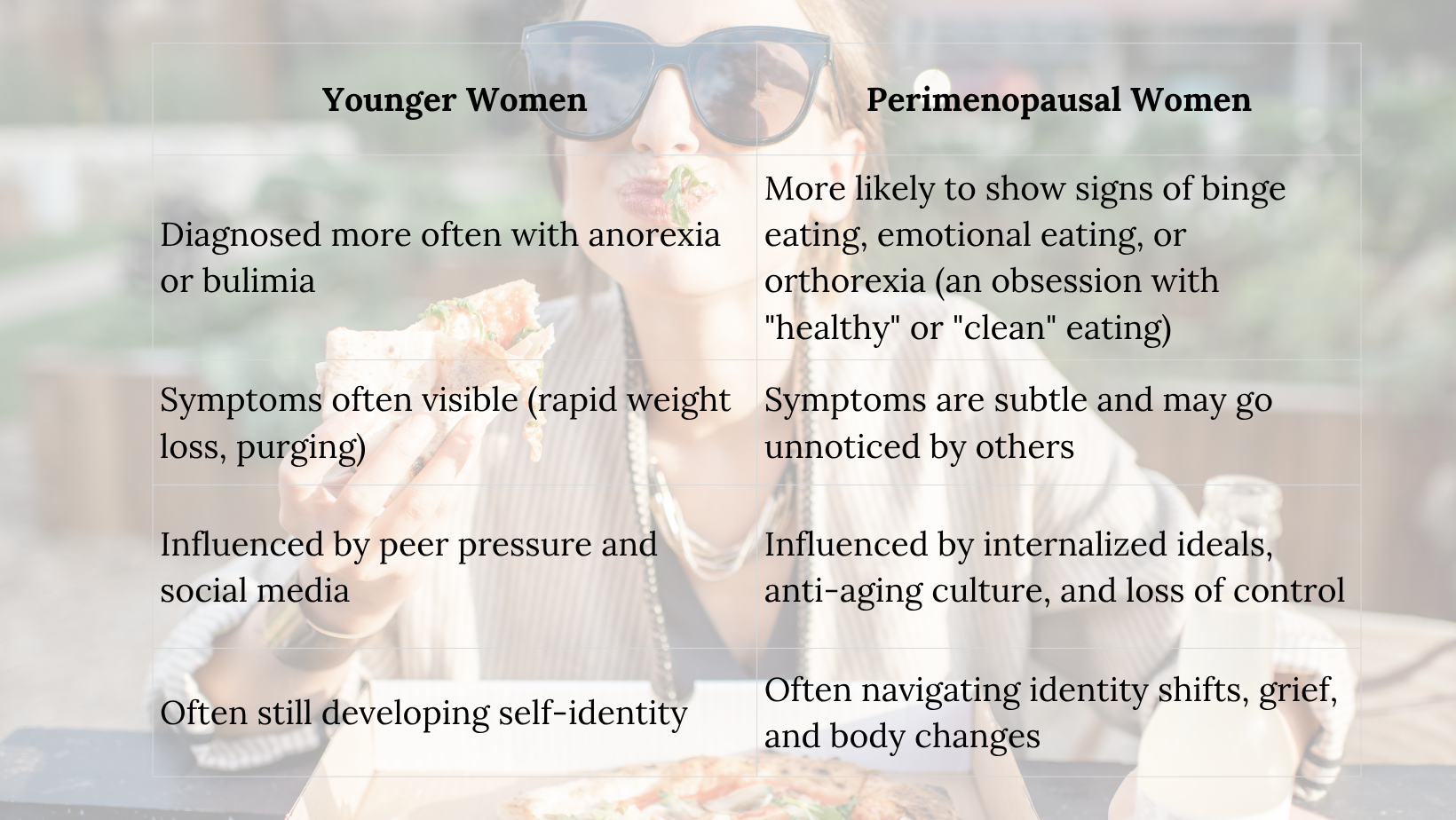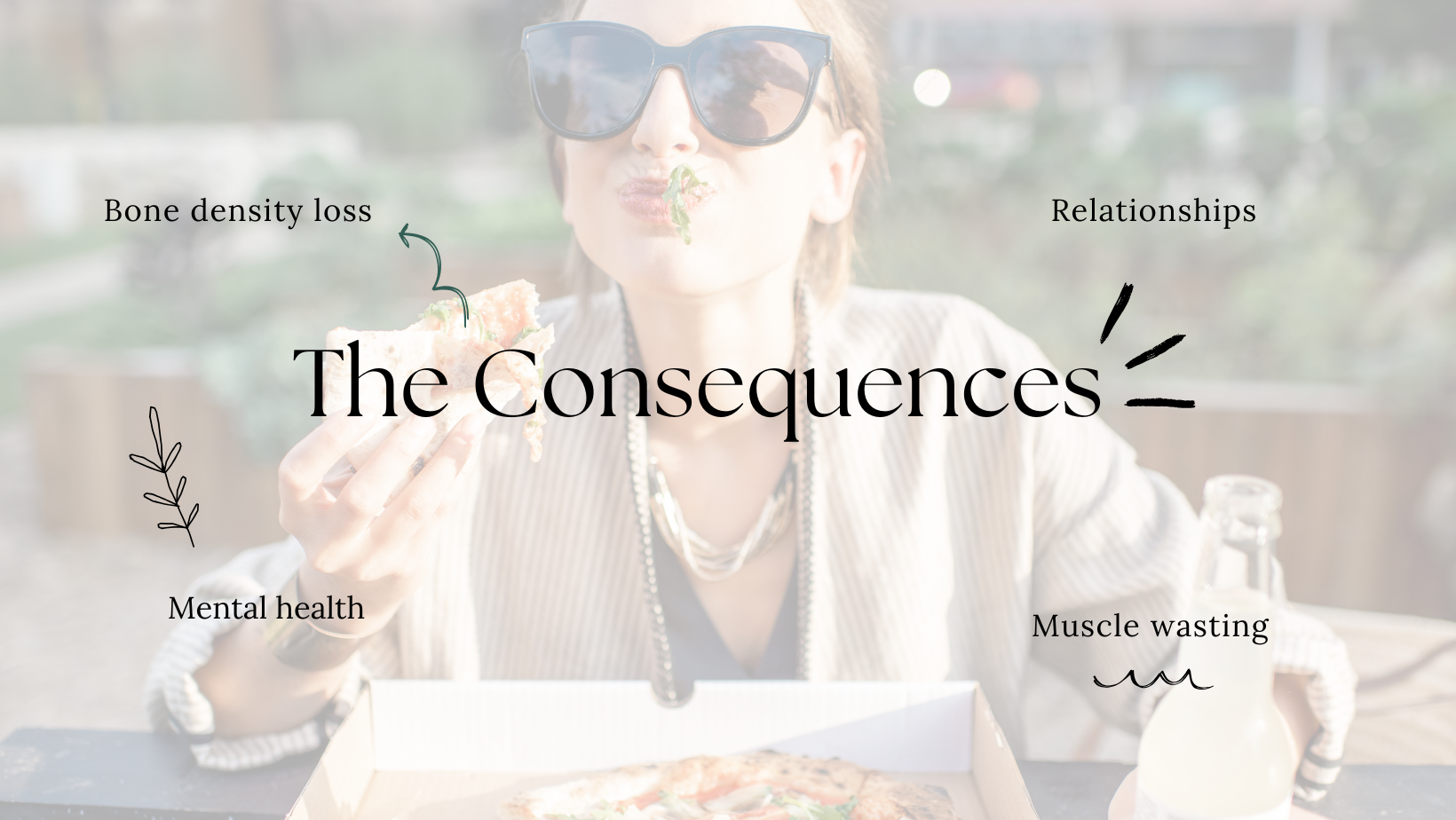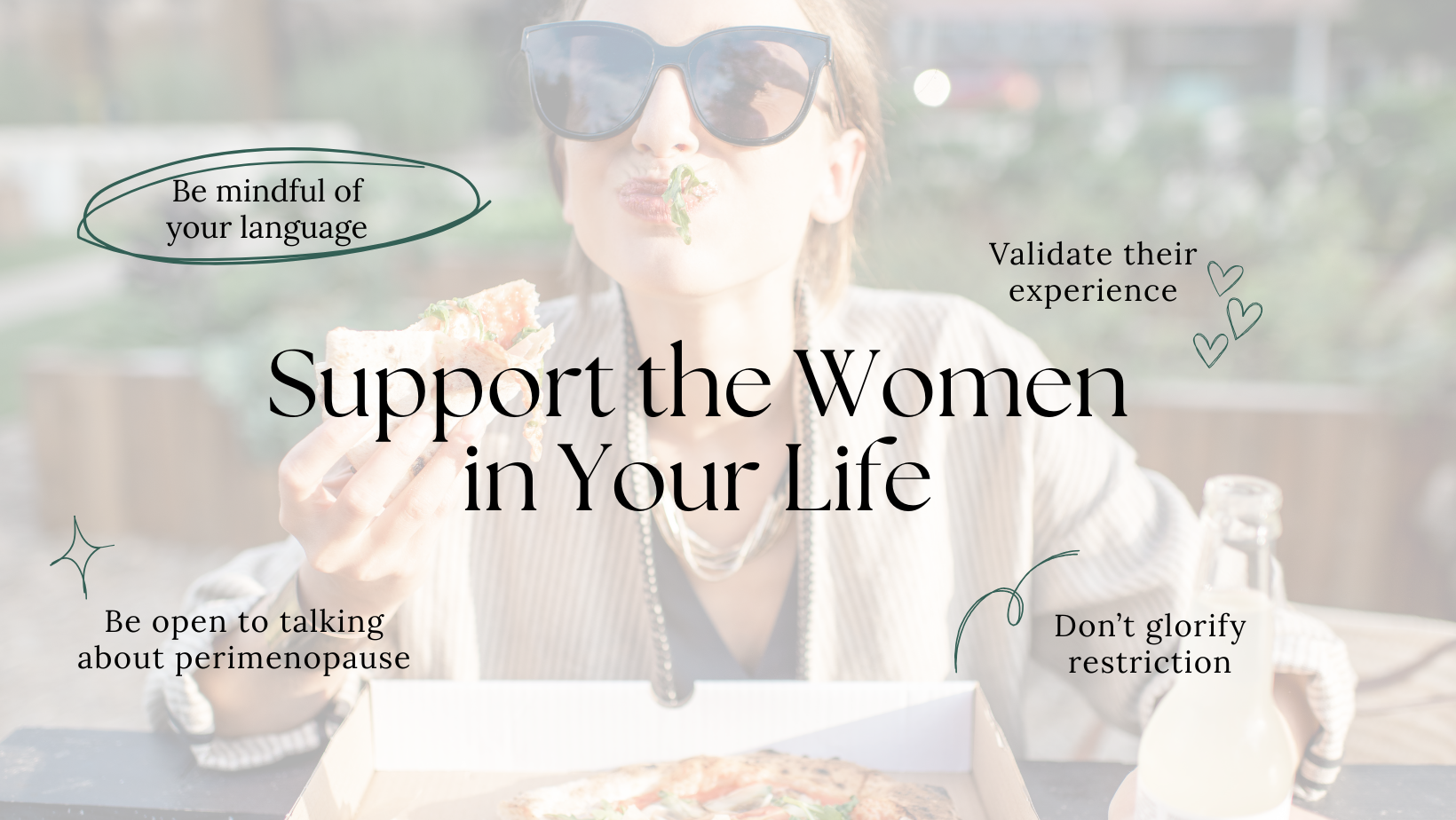The Rise of Eating Disorders in Perimenopause

The other day, I saw a post on Instagram about how we talk to our daughters and nieces about weight—how even casual comments can shape the way young girls see themselves. It stuck with me.
Later that same day, I overheard a woman—maybe in her late 40s—on the phone. She was talking about bathing suits and said, half-joking, half-defeated, “Nothing looks good on me. I’m too fat.” For the record, she wasn’t overweight at all.
And I couldn’t stop thinking about the disconnect.
On one hand, we know we want to break the cycle for the next generation. On the other hand, so many women—especially in midlife—are silently struggling with their own body image and relationship with food.
We don’t talk enough about eating disorders in women over 40. But we should.
Because they’re rising.
Because they often go unnoticed.
And because they affect women we know and love—maybe even ourselves.
Yes, Eating Disorders Can Start (or Return) in Midlife
When we picture eating disorders, we usually think of teenage girls or young women in college. But research shows that perimenopause—the transitional years before menopause—represents another high-risk window for disordered eating.
Some women are relapsing after years of recovery. Others are developing symptoms for the very first time. Either way, it’s not rare, and it’s not something to brush off.
What’s driving this trend?
- Hormonal changes that affect mood, appetite, body composition, and sleep
- Weight gain, especially in the abdominal area, that feels unfamiliar and frustrating
- Societal pressure to stay thin and youthful
- Life stressors, like aging parents, empty nests, or work burnout
- Deeply ingrained body image beliefs resurfacing under stress
It’s a perfect storm—and often, it plays out silently.
What Perimenopausal Eating Disorders Look Like
We tend to associate eating disorders with dramatic weight loss or extreme behaviors. But in perimenopause, the symptoms often look more like “clean eating,” over-exercising, or constant body dissatisfaction. Many of these behaviors are even praised as “healthy habits.”
Here’s a breakdown of how eating disorder symptoms often differ between younger and midlife women:

Because the behaviors are more easily masked—under labels like “wellness,” “reset,” or “clean eating”—they often go unrecognized. But that doesn’t make them less harmful.
Why Midlife Struggles Often Go Unnoticed
You might wonder: if this is so common, why isn’t it talked about more?
A few reasons:
- Stereotypes – Many healthcare providers (and women themselves) associate eating disorders with teens, not middle-aged women.
- Shame – Women often think, “Shouldn’t I be over this by now?” or, “I’m too old to have an eating disorder.”
- Cultural norms – Obsessing over weight, dieting, and staying in control is normalized—especially in women over 40.
- Lack of screening – Few doctors ask midlife women about their eating habits or body image concerns unless there are drastic weight changes.
As a result, many women suffer quietly. They may not be “sick enough” to raise alarm bells—but they’re also not well.
The Consequences Go Beyond Weight
Eating disorders at any age take a toll, but midlife adds another layer of complexity.

- Bone density loss is already a concern during and after menopause—restrictive eating and over-exercising make it worse.
- Muscle wasting can happen quickly, especially when protein and calorie intake is too low.
- Mental health struggles like anxiety, depression, and low self-worth are often deeply intertwined.
- Relationships can suffer—because when you’re constantly preoccupied with food or your body, connection takes a back seat.
Even when the behaviors aren’t extreme, they erode joy, energy, and confidence.
What You Can Do (Even If You’re Not in This Life Stage Yet)
If you’re not there yet, why should this matter?
Because you know someone who is. And because what we say about food, weight, and aging matters—to ourselves and to each other.
Here’s how you can support the women in your life:

- Be mindful of your language – Complimenting someone’s weight loss may seem kind, but it can reinforce disordered patterns.
- Validate their experience – If someone shares body image struggles, resist the urge to say, “But you look great!” Instead, try, “That sounds really tough—thanks for telling me.”
- Don’t glorify restriction – Wellness doesn’t mean constant control or deprivation.
- Be open to talking about perimenopause – The more we normalize this stage, the less isolated women will feel when symptoms—emotional or physical—show up.
And if any of this post feels uncomfortably familiar to you, please know: you don’t need to wait until it gets “bad enough” to ask for help. Discomfort, anxiety, and guilt around food and your body are signs that something needs attention.
Support Is Out There—At Any Age
Healing is possible, even after decades of disordered eating.
Effective treatment options include:
- Cognitive Behavioral Therapy (CBT)
- Compassion-focused therapy
- Nutrition counseling with eating disorder-informed providers
- Peer support groups—some designed specifically for midlife women
Recovery isn’t about perfection. It’s about creating a more peaceful relationship with food, body, and self.
Let’s Talk About This More
Eating disorders in perimenopause aren’t rare. They’re just rarely talked about.
So let’s change that. Let’s support the women who are in this stage—and let’s continue questioning the culture that tells us we’re only valuable when we’re shrinking.
Because we can teach our daughters and nieces how to love themselves.
But we have to believe it’s possible for us, too.
